#marguerite de france duchesse de savoie
Text
Claude de France
Claude de France (1499-1524)
Queen of France, duchess of Brittany, countess of Blois, first consort of King Francis I

The "good queen" Claude- today overshadowed by her husband King Francis I- was born in 1499 to Queen Anne de Bretagne and her second husband Louis XII. Bonfires signaled rejoicing throughout the realm for, with the help of Saint Claude, a viable child had been born. The princess, although not the desired son, was fashioned in her mother's pious image to become both sovereign duchess of Brittany and empress (she was engaged to the future Charles V at age two) or queen (of France, as her father, before her first birthday, had secretly declared). A decade later, her sole sibling, Renée de France, the remarkable future Protestant Duchess of Ferrara, would again owe her name to another saintly protector of women in search of a child. Thus if Queen Claude inherited Queen Anne's limp, her ability to bear relatively healthy offspring was entirely her own. Her engagement in 1506 and her marriage in 1514 consolidated the first prince of the blood's claim to the throne, but after seven debilitating pregnancies in ten years (Louise, Charlotte, François, Henri, Madeleine, Charles, Marguerite), the tired body of this honored "daughter, wife and mother" of kings collapsed at the tender age of 24.
The canonization of Francis of Paola (1519) promoted by Claude and her mother-in-law Louise de Savoie in gratitude for protection from illness and the births of namesake male heirs, betrays the inextricable intertwining of the two sides of the royal family, programmed from 1498. Claude's parents willfully empowered their female progeny; thus when King Francis I descended into Italy the first year of their respective reigns, the pageantry in Lyon depicted him entering Milan to "defend the rights of the two daughters of France." Although a princess raised to be queen, Claude learned to share her husband with other women, and her power and its public expression with strong female kin, especially Louise de Savoie, named regent in her stead, and her sister-in-law Marguerite de Navarre. Legend and neglect have imposed the image of an ever-with-child, sweet, and submissive queen. Yet this eloquent and cultivated bearer of legitimacy commanded respect and carved out a space of her own in the cities of the realm (the townspeople cast her as Justice and Wise Counsel), in her duchy of Brittany and in her Loire Valley territories, especially at the castle of Blois. Shortly after his accession, her husband flaunted his monogram "F" and his emblem, the salamander, on the spectacular new façades of the castle of Blois's "wing of Francis I"; but on the cornice and ceremonial staircase and over the fireplaces, these cohabitated with his consort's at what was in fact her regal home. Here and elsewhere, her emblems- the ermine, occasionally on a leash with the motto A ma vie (To my life), her knotted rope, her swan pierced by an arrow, and her full moon with the device Candida candidis (candid for the candid)- called attention to the queen.

A primer made for this daughter of privilege stages her with her sister Renée, as children tutored by Saint Anne and under the protection of Saint Claude, while learning to read and write; and learning came to be a feature at the heart of the queen's persona. Following her accession in 1515, Claude became mistress of the castle of Blois with its royal library, her mother's manuscripts probably among its precious volumes, to which the king, in an incident of 1516, did not have a key. Her Book of Prayers, by the "Master of Queen Claude", returns to the then commonly depicted theme of Saint Anne as educator, but its pages are uncommonly packed with illuminations in which books form an insistent leitmotiv [..] Tapestries depicting scenes from Christine de Pizan's City of Ladies, these too inherited from her mother, hung into the rooms of the castles of Amboise and/or Blois, frequented by her twelve ladies-in-waiting (including Anne Boleyn and Diane de Poitiers). The writer Anne de Graville commissioned a picture of herself offering her mistress Claude one of the works she dedicated to her, thereby providing us with a rare inside vision of the city of ladies surrounding Claude.
In a final act of independence, the queen bequeathed Brittany not to her husband but to her son, the dauphin. Rather than willfulness, though, sensitivity to the plight of her subjects had colored numerous episodes of her life. During her entry into Nantes in 1518, when the town offered her a costly heart of gold flanked with ermine, she promptly gave it back. Shortly before her death she endowed the building of a cemetary in a suburb of Blois for those who had succumbed to the plague. Such symbolic gestures, combining strength and humility, help us to comprehend why the memory of the short-lived Claude lingered on. Miracles were said to occur around her body, laid to rest in her parents' chapel of Saint Calais in 1524. Subsequently, her second son, King Henri II (of the seven siblings, only he and his sister Marguerite, future duchesse de Savoie, outlived their father) immortalized her on a monumental tomb at Saint-Denis. And in her Book of Hours, Catherine de Médicis inserted Claude's portrait near that of Eleonora of Austria, Francis I's second wife, forging an unexpected double embodiment of a powerful queenly ideal.
Kathleen Wilson-Chevalier- Encyclopedia of Women in the Renaissance
#xvi#kathleen wilson chevalier#encyclopedia of women in the renaissance#claude de france#princesses of france#queens of france#duchesse de bretagne#anne de bretagne#louis xii#renée de france#françois i#dauphin françois#françois iii de bretagne#henri ii#marguerite de france duchesse de savoie#catherine de medicis#éléonore d'autriche
8 notes
·
View notes
Text






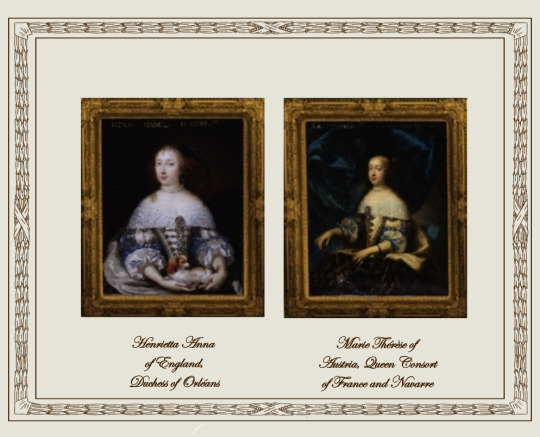
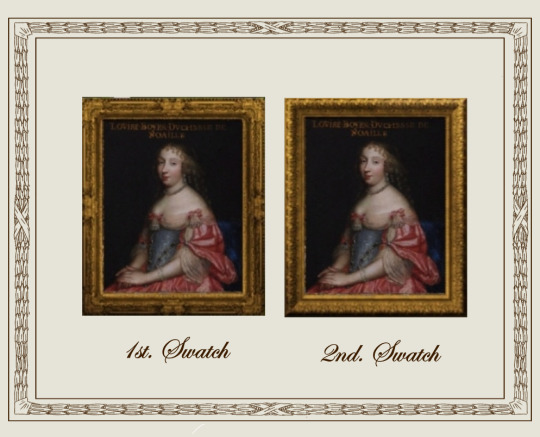
Louis XIV's Gallery of Beauties
A retexture by La Comtesse Zouboff — Original Mesh by @thejim07
This set of 20 portraits was comissioned by the king himself in the 1650s to Charles and Henri Beaubrun (except for a portrait of Henrietta Anna of England, Comissioned to Nicolas Mignard) The portraits comprises the queen, royal princesses and ladies of the court. They hanged at the king's appartments at Versailles. In the 1670s the paintings were progressively relegated to the king's minor residences, but in 1837, Louis-Philippe, King of the French turned Versailles into a museum and rejoined the paintings, in the Louis XIV Rooms, where they remain.
The set includes 20 portraits, with the original frame swatches, fully recolorable. The portraits are of:
Anne Genèvieve de Bourbon, Duchess d'Estouteville and Longueville
Françoise-Athénaïs de Rochechouart (later, Marquise de Montespan)
Anna Martonozzi, Princess of Conti
Anne Louise Boyer, Duchess of Noailles
Anne Marie Gonzaga, Countess Palatine
Anne de Rohan-Chabot, Princess de Soubise
Catherine Henriette d'Harcourt, Duchess d'Arpajon
Catherine de Neuville, Countess d'Armagnac
Charlotte Catherine de Gramont, Proncess of Monaco
Charlotte Isabelle Angélique de Montmorency-Bouteville, Duchess of Mecklenburg-Schwerin
Elizabeth of Orléans, Duchess of Guise and Joÿeuse
Françoise Madeleine d'Orléans (née de Valois) Duchess of Savoy
Françoise Mignot, Mareschalle of l'Hospital
Françoise de Neufville, Duchess of Chaulnes
Gabrielle-Louise de Saint-Simon, Duchess of Brissac
Henrietta Anna of England, Duchess of Orléans
Madeleine-Charlotte d'Albert-d'Ailly, Duchess of Foix
Marguerite Louise d'Orléans, Grand Duchess of Tuscany
Marguerite-Louise-Suzanne de Béthune-Sully, Countess of Gyche
Marie Thérèse of Austria, Queen Consort of France and Navarre
Found under Decor > Paintings for 940 §
Retextured from the "portrait of Anne Marie Louise d'Orléans", found here
Table, torcheres and floor by @thejim07
Rest of the decor by @joojconverts
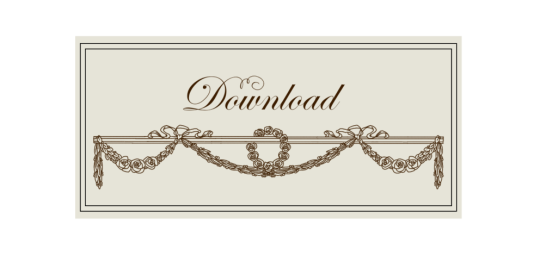
Drive
(Sims3pack | package)
(Useful tags)
@joojconverts @ts3history @ts3historicalccfinds @deniisu-sims @katsujiiccfinds
-------------------------------------------------------
#the sims 3#ts3#sims 3 cc#portrait#s3cc#sims 3#sims 3 download#sims 3 cc finds#palace of versailles#sims 3 decor#wall decor
42 notes
·
View notes
Text
Marguerite de Valois-Angoulême, duchesse de Berry
Madame de Savoïe. Marguerite de Valois-Angoulême, duchesse de Berry (1523–1574)
Madame de Savoïe
Marguerite de Valois-Angoulême, duchesse de Berry (1523–1574)
Black pencil and red chalk.
Marguerite de France, the fourth daughter of King Francis I of France and Claude, Duchess of Brittany, was born in Saint-Germain-en-Laye on 5 June 1523 and married the Duke of Savoy, Philibert-Emmanuel, on 9…
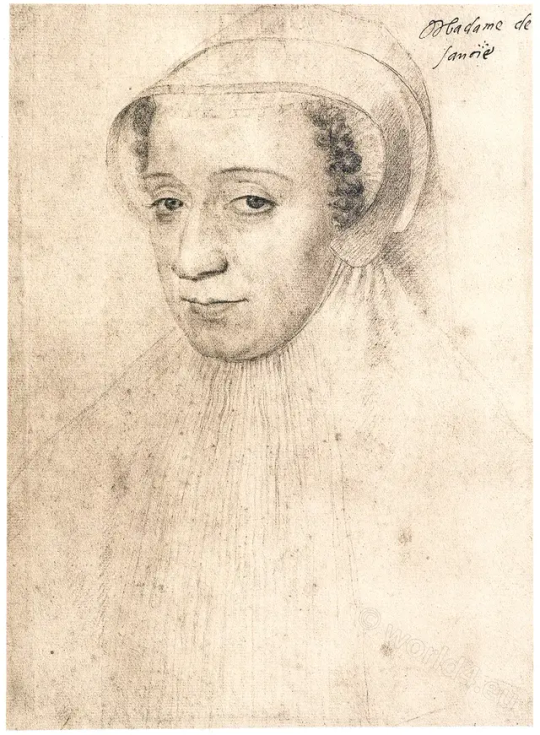
View On WordPress
1 note
·
View note
Text
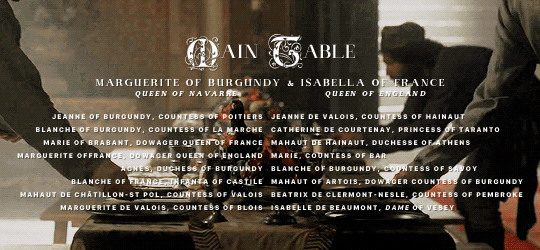


The ladies-only banquet was one of many events organized in the days that immediately followed the ceremony held on June, 5th 1313, where the three sons of the King of France Philippe IV, along with some 200 noble young men from the most prestigious families in the kingdom, were officially knighted.
At the second table, were seated: Yolande of Dreux, Dowager Duchess of Brittany, her sister-in-law Pernelle de Sully, the Dowager Countess of Dreux, her mother Marguerite de Beaumez, Blanche of Brittany, sister of Mahaut of Artois, Jeanne of and Marie of Artois, her daughters, Isabelle de Rumigny, Dowager Duchess of Lorraine, Elisabeth of Austria, Duchess of Lorraine and daughter of Emperor Albert I; the cousins of Marguerite of Burgundy Marie of Hainaut, Jeanne d'Argies, Countess of Soissons, perhaps Béatrice, Princess of Hungary and Dauphine of Viennois, Marie of Flander, Countess of Boulogne, Isabelle of Lorraine, Countess of Vaudémont, Agnès de Brienne, Countess of Joigny, her daughter Jeanne of Joigny, Eleonore of Savoy, Countess of Forez, Louise de Beaumetz, Countess of Sancerre, Marie, Countess of Roussis, Jeanne de Gîgne, Countess of Eu, perhaps Béatrice of Burgundy, Dowager Countess of La Marche, Marguerite of Burgundy's aunt, Isabeau de Coucy, sister of Mahaut de Châtillon-Saint Pol; the ladies of Jeanne of Burgundy: Alix de Joinville, lady of Beaufort, wife of John of Lancaster, Alix de Clermont-Nesle, lady of Nesle, Jeanne de Tancarville, Vicountess of Melun, Isabelle de Forez, wife of the governor of Lyon, Jeanne de Dampierre, Jeanne de Vendôme.
A third table was counting at least: Marie de Vaucemain, lady of Chey, a lady of Marguerite's, Alips de Mons, wife of Enguerrand de Marigny, Roberte de Beaumetz, her daughter-in-law and a cousin of the Countess of Sancerre, Jeanne de Machot, lady of Viarmes, daughter of Saint Louis' chamberlain and the wife of Philippe IV's chamberlain, Marguerite des Bars, wife of another chamberlain of Philippe IV's, Isabeau of Burgundy, wife of a chamberlain of Louis, King of Navarre, Isabeau de Rosny, her mother-in-law, Marguerite de la Roüe, Jeanne de Courpalay and Béatrix, widow of Nogaret. Wives of other clerks were also in attendance, potentially along female members of the bourgeoisie. — Gaëlle Audéont, Philippe le Bel et l'Affaire des Brus, 1314
317 notes
·
View notes
Text
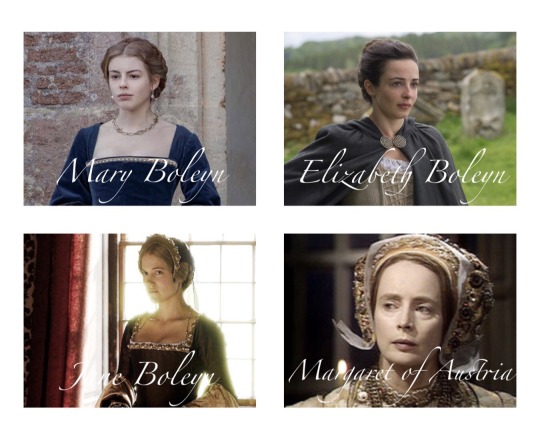
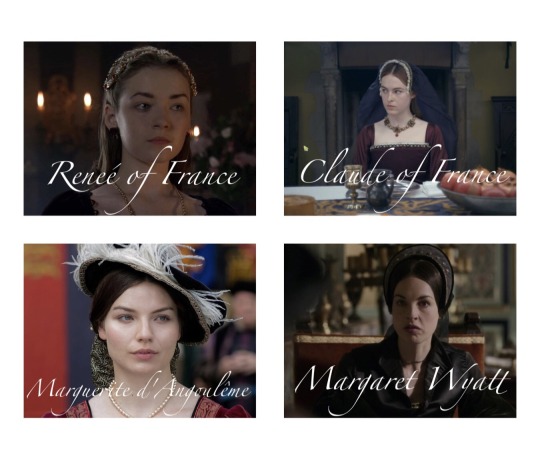



The Female Friends and Ladies-in-Waiting of Anne Boleyn
Elizabeth (Howard) Boleyn, Countess of Wiltshire — Elizabeth was Anne’s mother. Elizabeth acted as chaperone during her daughter’s courtship with Henry VIII and supported the relationship wholeheartedly. It’s thought that Elizabeth was the owner of the embroidery depicting a falcon ripping apart a pomegranate—the falcon being her daughter’s badge and the pomegranate being the badge of Catherine of Aragon.
Mary Boleyn — Mary was Anne’s older sister. Mary also served as one of her sister’s ladies-in-waiting until her secret marriage to William Stanford in 1534. Mary and her sister were very close and in a letter written to Thomas Cromwell after her banishment from court, Mary lamented that she would miss her sister the most of all her family.
Jane (Parker) Boleyn, Viscountess Rochford — Jane was Anne’s sister-in-law through her marriage to George Boleyn. Jane served as one of Anne’s ladies-in-waiting during her Queenship and possibly even before. It’s believed that Jane testified against Anne and George in 1536 but there is no evidence to support this. Jane would eventually be executed alongside Katheryn Howard in 1542.
Margaret of Austria, Duchess of Savoy — Margaret was regent of the Netherlands from 1507-1515 and again from 1519-1530. Anne lived at Margaret’s court from 1513-1514. Very little is known about their relationship except that Margaret seemed to be very fond of the young Anne and was very upset when Anne left Margaret’s court to go to France.
Claude, Queen of France — Claude was the first wife of King Francis I and served as Queen consort of France from 1515-1524. Very little is known about Claude and Anne’s relationship although it seems Claude was very fond of Anne. Anne was the only English lady chosen to stay on as a lady to Claude rather than return to England with Mary Tudor. And when Anne was summoned back to England in 1522, Claude was so upset by this that Francis I found out and believed this was a symbolic gesture of England withdrawing its friendship from France.
Reneé of France — Reneé was Claude’s younger sister and often spent time with her at court. Later in life, Reneé remembered Anne with affection and when she was considered as a bride for Henry VIII after the death of Jane Seymour, she rejected the offer, not wanting to marry the man who had executed her childhood friend.
Marguerite d'Angoulême — Marguerite was the sister of Francis I and a very influential figure at his court. Although Marguerite never officially converted to Protestantism, she was sympathetic with the movement and it was possibly through her influence that a young Anne was introduced to the Reformist movement. Even though Anne was technically a lady to Claude, she and Marguerite still managed to become close friends. When Anne and Henry VIII traveled to France in 1532, Marguerite did not attend, however it’s been speculated that she was kept away deliberately by her brother. Francis who possibly knew of Marguerite’s friendship with Anne and didn’t want to appear to be too supportive of Henry and Anne’s marriage as he was also trying to arrange a marriage between his son Henry (future Henry II) and Catherine de Medici—the Pope’s niece. Later, in 1534, Anne wrote to Marguerite that her “greatest wish, next to having a son, is to see you again.”
Margaret (Wyatt) Lee — Margaret was possibly one of Anne’s oldest and closest friends. The Wyatts and Boleyns were neighbors, only living a few miles apart from each other. Margaret began serving Anne as a lady-in-waiting even before she became Queen. She accompanied Anne to France in 1532 and served as Anne’s Mistress of the Wardrobe, making her the chief lady and a part of Anne’s inner circle. Margaret continued to serve Anne throughout her entire Queenship and it’s speculated Margaret might have been on the scaffold with Anne. Margaret also served as chief mourner at Anne’s small funeral.
Bridget (Wiltshire) Wingfield — Just like Margaret Wyatt, Bridget was possibly one of Anne’s oldest friends. She also lived not far from Anne’s home at Hever Castle. Bridget was married to Richard Wingfield, widower of Katherine Woodville (sister of Elizabeth Woodville). She served Anne as a lady-in-waiting before and during her Queenship, although the two had a falling out in 1533 when Bridget married a man that Anne didn’t approve of. Unfortunately, Bridget died in childbirth in 1534 and it’s unknown if she and Anne reconciled before her death.
Margaret “Madge” and Mary Shelton — Margaret and Mary were Anne’s first cousins, the daughters of Anne (Boleyn) Shelton, the older sister of Thomas Boleyn. Both girls served as ladies-in-waiting to Anne while she was Queen. One of them also had a brief affair with Henry VIII in 1535, although it’s not known for sure which sister it was. Madge was also courted by Henry Norris and it was because of his frequent visits to Anne’s chambers under the pretense of courting Madge that he was suspected of being one of Anne’s lovers and ultimately executed.
Anne “Nan” Gainsford, Lady Zouche — Nan was one of Anne’s ladies-in-waiting, possibly entering her service almost immediately after Anne’s engagement to Henry VIII in 1527. Anne and Nan quickly became friends and, in 1528, Anne lent Nan her copy of William Tyndale’s “The Obedience of a Christian Man”. The book was taken by her betrothed, George Zouche, and was thereafter confiscated by Cardinal Wolsey. After the book was returned to Anne, she gave it to Henry to read which is what possibly inspired him to break with the Catholic Church. After Anne’s death, Nan went on to serve Jane Seymour before she retired from court after Jane’s death. At some point, Nan encountered George Wyatt, grandson of Thomas Wyatt, and told him stories of her time serving Anne Boleyn which George then compiled into a biography of Anne.
Elizabeth (Browne) Somerset, Countess of Worcester — Elizabeth was a lady-in-waiting who probably entered Anne’s service sometime before 1530. When Elizabeth was about to give birth in 1530, Anne paid for her midwife. Elizabeth also once borrowed £100 from Anne; and in the summer of 1536, shortly after Anne’s execution, Elizabeth gave birth to a daughter named Anne after the late Queen.
Anne Savage, Baroness Berkeley —Anne served as a lady-in-waiting to Queen Anne and was one of only four or five witnesses to Anne Boleyn’s secret marriage to Henry VIII on 25 January 1533.
Margaret Douglas — Margaret was the daughter of Margaret Tudor, Queen of Scotland and niece-in-law to Anne Boleyn. She was taken into Anne’s household in 1533 where she served as a lady-in-waiting until Anne’s death.
Elizabeth “Bess” Holland — Elizabeth served as a lady-in-waiting to Anne Boleyn and was also the mistress of Anne’s uncle, Thomas Howard, 3rd Duke of Norfolk
Honor Grenville, Viscountess Lisle — Honor only served Anne briefly during her and Henry’s visit to France in 1532 before moving permanently to Calais with her second husband, Viscount Lisle. However, she stayed in contact with Anne and would send her gifts—in fact, it was through Honor that Anne acquired her beloved dog Purkoy.
Anne Parr — Anne began serving Queen Anne in 1533. It was through Queen Anne’s influence that the young Anne would become an evangelical and avid reformer. Interestingly, Anne would eventually hold a similar title to her former mistress when she married William Herbert, Earl of Pembroke, making her the Countess of Pembroke. Anne’s older sister, Kathryn, would later go on to become Henry VIII’s sixth wife.
Mary (Scrope) Kingston — Mary was the wife of Sir William Kingston who was the Constable of the Tower. Mary served as a lady to Anne during the Queen’s imprisonment and it was her job to report all of the Queen’s words and actions to her husband. It’s also said that the other ladies weren’t allowed to speak to the Queen unless Mary was present.
Jane (Guildford) Dudley, Duchess of Northumberland — Jane was one of Queen Anne’s ladies-in-waiting. She was also the mother of Robert Dudley, the future favorite of Anne’s daughter Elizabeth I.
Jane Seymour — Jane Seymour served as a lady to Queen Anne Boleyn from 1533-1536. After Anne’s death, she would become Henry VIII’s third wife and mother of his son, Edward VI. Jane’s sister, Elizabeth, also served as a lady alongside her.
#anne boleyn#elizabeth howard#elizabeth boleyn#mary boleyn#jane parker#jane boleyn#jane rochford#margaret of austria#claude of france#renee of france#marguerite of navarre#margaret wyatt#margaret lee#bridget wiltshire#bridget wingfield#margaret shelton#madge shelton#mary shelton#anne gainsford#nan gainsford#elizabeth browne#elizabeth somerset#anne savage#margaret douglas#elizabeth holland#bess holland#honor grenville#anne parr#mary kingston#jane dudley
84 notes
·
View notes
Text
Habsburg women in fashion of Netherlands: Who is who? Part 5:
I might have been wrong presviously, as this suggests:

I’ve said in part 2, that the flower-shaped pendant upon necklace-in numbers 3(on left) and 10(on right) could be identification of ties to royal family of Bohemia, which had similiarly set jewelry.


However, the same(or rather very similiar) pendant appears to be on painting labelled as Margaret of Austria, as child:

There are 2 possibilities.
1)I am wrong, and that pendant/brooch was part of Habsburg jewels for much longer, and i hence cannot use it to prove who this girl/woman is.
(But we cannot rule out that clever Margaret gave her jewel to her niece, after she was made aware that such style of jewellery were popular in Bohemia/Hungary).
Or
2) It’s misidentified as Margaret of Austria. And grossly misdated.
The painting is called Marguerite d'Autriche, duchesse de Savoie (1480-1530) and is located in Musée National du Château de Versailles, France:

Text upon it dates it as from year 1483(it looks bit like 1485, but it is 1483.)
And supposednly it is pair with matching portrait of Philip I as child:

Both indeed had such hair, order of golden shroud gets us quickly to Habsburg connections. And rounded neckline of girl, doesnt seem as what we see in late 1500s, on Philip’s children. Although the split front of dress, was worn sometimes even after 1500s.
Problem with theory it is Philip and Margaret is identification of the artists-it is atributed to Master of Legend of Magdalene.
It is said he was active since 1483 to 1527. But why then would he work together with Coninxloo up to 1507. Some speculate that Pieter van Coninxloo and Master of Legend of Magdalene were even same person, but that is higly unlikely as Conixloo was active between 1460-to 1513. To stretch it to 1527, that is truly stretching it too far.
Master and pupil? Maybe, and maybe even ratehr accomplished painter has seeked tutotallage from more experienced painter.
Relatives is another great possibility. Style being so similiar reminds me of Francois and Jean Clouet(father and son). Conixloo had younger brother called Jan, also painter(but little is know of his career), and came from family of artists, so it is possible it was some relative. (although I personally think style of master of magdalene and Juan(John/Jan) de Flandes(Flanders) is somewhat similiar).
Problem with such similiar styles of two(perhaps even more) painters, is that without chronology or proper dating of fashion, you can easily come to all wrong conclusions, and records don’t help if different painters of same surname are paid. And it wouldn’t suprise me if these two paintings commonly dated as 1483, because text on them says so! And that is the reason why career of Master of Legend of Magdalene is said to have started in 1483. Because according to to these two portrait, it is his earliest work.
Another issue with it, is that in theory the artist should progress/improve in 40 years of work. It is pretty clear that in Netherlands there was same court painter from c. 1490s, painting still in c.1507- or probably a workshop, under same master. But the face is always the same(and most likely done by the main person within the workshop).
Here on closeup on Philip from c.1500, you can see some basic characteristics of his work, the very distingishable face style:

This is by him: Eleanor on left, Isabella on right-c. 1507

Since the artist kept this style up to c. 1507, for cca 20 years, it is highly unlikely that when he began to start painting, he could have painted
the supposed Philip’s portrait, it is not his style, unlike another of Philip’s portrait is by Master of Legend of Magdalene(on right)-dated as c.1490s:

Clearly, the portrait on left was painted by another artist. Different from Master of Legend of Magdalene of 1490s-1500s. However, the style is rather similiar to work of Master of Legend of Magdalen from c. 1510s-1520s.
Imo two different artists are labelled as Master of Legend of Magdalene, and one of them might be Coninxloo. But that is even more complicated, because Coninxloo’s work from c. early 1510s, has considerably different style from later work of Master of Legend of Magdalene. So it might be even more artists. Possibly, several different members of same workshop, which came and went, when other oportunities arose.
Here is Charles(on right) c. 1507, by Master of Legend Magdalene, usually this portrait mislabelled as Philip, because it mimics his portrait. And Here you can see that Charles didn’t have brown hair, at least not as child!
Darkening of pigments of hair, no doubt contributed to the myth that Charles V and his sisters had dark hair, making their portraits more likely to be mislabelled.

So if you ask me, I am saying it is misdated, mislabelled and were looking at 1500s work. I am not sure by whom.
I found nothing about museum’s webpages about chronology of those 2 paintings of siblings(right on top) of Philip and Margaret, and i believe they are simply assuming identity of the sitters and dating based upon the text. Which might have been added even centuries later.
When chronology is done and disproves me, I will admit I am wrong about it. But what i see with my own eyes upon the boy’s portrait, is imo indication they have it wrong.
But, i am puzzled about the neckline of the girl, and headwear.


It doesn’t make sense. It doesn’t appear to be at all fitting with style of royal children of Netherlands(except split front, which tbh sometimes appears in Netherlands after year 1500, but it’s not mainstream.)
But perhaps it is not supposed to be. Juana is depicted with rounded neckline:

And split front(probably she is pregnant, hence the ties at front). I honestly don’t get where Juana got isnpiration for this one, as it doesn’t appear to be purely spanish nor netherlandish-at least the depictions I know of. And I am no expert on either. But it is entirely possible Juana experimented with fashion and this was her style. And her daughter was in mother’s fashion. Is it likely? Not really for Mary, because Juana was forced to leave her children in Burgundy and leave, while Mary was just few months old. When Mary would be of age we see the child in portrait(around 3 years of age-that is correct), Juana would have been locked up. In 1507 Margaret of Austria became guardian of her brothers kids, and she had them immediately depicted in netherlandish fashion, and kept doing so, until they left her care. Why would she divert from this and allow child to be depicted in other fashion?
Two possibilities. 1)Sentiment towards Juana and orphaned Mary, who couldn’t even remember her mother, but perhaps saw portrait of her mother(above) and wanted to dress like mummy. Is it likely? It’s possible it occured, but I still doubt she’d be allowed to wear such fashion on official portrait.
2)Child is bethrohed, and it’s fashion of her bethrohed’s country
If my previous theory of that pendant/brooch is correct and it was sent to future Queen of Bohemia and Hungary, as customary for bride to be, she could be depicted in fashion of land of her future husband. (which at this case actually means two countries-Hungary AND Bohemia).
Sadly, there are no depiction of Louis II as child nor of his sister Anne(of Bohemia and Hungary(Anna Jagellonica) from 1500s. However, there are some depictions of their mother Anne of Foix.
Upon her arrival she had square neckline, as per fashion of France

But one mural then depicts her with rounded neckline:

On wiki it is said to be from 1509. However since this mural is localed in Kaple svatého Václava v katedrále svatého Víta(chapel of St. Wenceslaus in Cathedral of St. Vitus) in Prague, Czechia(formerly Kingdom of Bohemia) and I am czech, i could easily find more about it.
In 2012, it was determined the renaissance murals in the chapel, including this one, were made between 1506-1509, and probably to celebrate the birth of the heir, future Louis II. (His father went through 3 marriages to get heir)
Anne of Foix died from complication after birth of Louis in 1506, and while she never been to Bohemia(they stayed at court in Hungary), this is the best depiction of her that we have and nothing suggest it is in any way inaccurate, and work upon it started just after she died. So while this is probably posthumous, the outfit is very likely accurate.
And surviving dres of Mary of Austria herself show at front(left) rounded necklane, and on back(on right too). Idk if that is Bohemian or Hungarian fashion, but neckline is roundish.

Though admitably overall style is quite different(but it’d be at least 10 year apart from childhood portrait).

So i am still cautiously suggesting that number 3 and number 10 might be Mary of Austria:

But i’ve became way less sure of it. Hold on!:

These two are actually very similiar in style. (obviously different colour stone, different pearls, but both have these odd bits sticking out.
Damn this is so crazy! Idk what to believe now. Tell me your thoughts. Am i wrong? Or did they misdated and mislabelled yet another royal portrait?
8 notes
·
View notes
Photo

Margaret of France, Duchess of Berry, later Savoy
Margaret of France, Duchess of Berry (French: Marguerite de Valois) (5 June 1523 – 15 September 1574) was the daughter of King Francis I of France and Claude, Duchess of Brittany.
4 notes
·
View notes
Text
La Princesse de Clèves, 8
La Princesse de Clèves, 8
Alexandre-Évariste_Fragonard_-_Scène_du_massacre_de_la_Saint-Barthélémy_(1836).jpg (2939×3958) (wikimedia.org)
Henri II of France died in 1559, at the age of forty-four. He was celebrating the Peace of Cateau-Cambrésis. That conflict had lasted 65 years, but peace had come. Henri II made sure his sister Marguerite, Duchess of Berry, married Emmanuel Philibert, Duc de Savoy.
However, the…

View On WordPress
0 notes
Photo



On the 9th of January 1514, Anne, Duchess of Brittany and Queen Consort of Louis XII of France died at the Chateau of Blois. Her death left Louis with two daughters, Claude and Rene. The two had been raised along Marguerite and her mother, the formidable Louise of Savoy. France had something known as the "Salic Law" meaning that no women could inherit the throne. If Louis XII died without a male heir, the throne would pass to his son-in-law who was married to his eldest daughter Claude, Francis. This did happen, but at the time there was the faint hope that he might still have a child so in the interest of forging a beneficial alliance, he turned to England and agreed to marry Henry VIII's younger sister, Princess Mary Tudor. Anne was the daughter of Francis II, Duke of Brittany who had been a gracious host to Henry Tudor, Earl of Richmond and his uncle, Jasper, while they were in exile. When Henry became King of England, he did his best to maintain good relations with Brittany and France (whose king at the time through his sister, also supported his claim). Francis II's death left a young Anne vulnerable. Anne of Beajeu, Charles VIII's sister, made arrangements to marry her to her brother. The union produced four boys, who all died at birth or in infancy. After Charles died, Anne married the next King, Louis XII, who allowed her to have some control over her duchy. Like most women at the end of the fifteenth century and beginning of the sixteenth, she was a patron of the arts, music and the latest intellectual current, Humanism. Anne was very young when she died. Thirty six and her death was the result of a kidney stone attack. Image: A miniature showing Queen Anne in prayer from the Grandes Heures d'Anne de Bretagne (ca. 1503-1508), medal of Queen Anne that celebrated her stay at Lyon, and a reliquary of Anne's heart at the castle of Blois. It was taken from the Museum Dobree, in Nantes in 2014 and exhibited at the chateau to celebrate four hundred years of her death.
2 notes
·
View notes
Text
Anne de Beaujeu
Anne de Beaujeu (Anne de France, 1461-1522)
Unofficial regent of France and duchess of Bourbon

Anne de Beaujeu provides an example of female political authority in a country where the Salic Law prevented women from assuming the crown. She also illustrates the tension between an increasingly centralized monarchy on the one hand and feudal independence on the other, having supported both causes at different times in her life. Probably born in 1461, Anne de Beaujeu was the oldest of the surviving children of Louis XI, king of France, and the one said to resemble him most intellectually and temperamentally. When this king died in 1483 leaving a thirteen-year-old Charles VIII on the throne, Anne and her husband, Pierre de Beaujeu, as his guardians, assumed control. In so doing, they resisted Louis d'Orléans, the next in line to the throne, who wished to be named regent. Louis and his supporters sought help from the estates-general who met in 1484 but who ultimately supported Anne's cause. Referred to as Madame la Grande (Grand Madam), Anne was recognized by the court and by foreign emissaries as the person actually ruling France during the early years of Charles's reign.
In 1488 she and Charles VIII squelched a noble uprising, the Guerre Folle (the Foolish War) led by Louis d'Orléans and Francis II duke of Brittany. Charles then married the new duchess of Brittany, Anne, to ensure the duchy's loyalty to France. Meanwhile Pierre de Beaujeu's two older brothers had died, leaving Pierre with the Bourbon inheritance. Anne and her husband were now the richest and most powerful nobles in France. In 1491, after the loss of one infant and fifteen years of childlessness, Anne gave birth to a daughter, Suzanne. As Charles VIII grew increasingly independent of his older sister, Anne redirected her attention to her own lands and feudal duties, though she remained his advisor while retaining her ties to the court. When Charles died suddenly in 1498 leaving no heirs, Louis d'Orléans became king of France. Neither his previous attacks on the crown nor his well-known personal vices inspired confidence in his subjects, so the support of Anne de Beaujeu and her husband were instrumental in a smooth accession to the throne. Anne agreed to overlook their antagonistic past and did not hinder the annulment Louis immediately requested from her physically disabled sister, Jeanne. In exchange, Louis XII waived the royal rights to the Bourbon inheritance in the case that Anne and Pierre did not have a male heir. Once all this had been established, the Bourbon's relationship with Louis XII and his new queen, Charles's widow Anne de Bretagne, became quite cordial. Anne de Beaujeu no longer held any direct influence, however, over the governance of the French state.
In 1504 or 1505, after the death of her husband and before she arranged a marriage for her daughter, Anne wrote Suzanne a book of lessons, Les Enseignements d'Anne de France, duchesse de Bourbonnois et d'Auvergne, à sa fille Susanne de Bourbon, modeled on the book that Louis IX had written for his daughter, the one her own father had written for Charles, and the writings of Christine de Pizan. Anne's version contains conventional advice on the appropriate behavior for noblewomen. During her unofficial regency, Anne had overseen the education of many young noblewomen at court, including Louise de Savoie, Marguerite d'Autriche, and Diane de Poitiers. The humble feminine figure that emerges from the Enseignements, however, seems at odds with their independent author. More easily recognizable are the anxieties about life as an older widow distant from court. The Enseignements ends with a tale about a noblewoman who bravely sacrifices her only child for the honor of her family and the interests of the king. Suzanne was, in fact, married shortly thereafter to a cousin to protect the integrity of the Bourbon inheritance.
In contrast to the moral of her tale, however, the interests of a noble family and those of the crown did not always overlap. Before she died, Anne witnessed the opposition of two adults whom she had raised from childhood: her son-in-law, the connétable de Bourbon, and Louise de Savoie, mother of Francis I, successor to Louis XII. Louise and her son, suspicious of the wealth and power of the connétable, the Bourbon heir, challenged his inheritance. After losing the domain that Anne had so carefully built up and defended during her lifetime, the connétable, perhaps with Anne's bitter approval, responded by betraying the French king Francis I- the other cause that Anne had defended so staunchly during her brother's reign. Anne died in 1522, before this ultimate betrayal.
Emily Thompson in Encyclopedia of Women in the Renaissance.
#xv#xvi#anne de france#anne de beaujeu#regents#duchesse de bourbon#louis xi#charles viii#pierre de beaujeu#louis xii#françois ii de bretagne#anne de bretagne#la guerre folle#suzanne de bourbon#sainte jeanne de france#louise de savoie#marguerite d'autriche#diane de poitiers#charles iii de bourbon#le connétable de bourbon#françois i#proof that anne approved of this ? i didn't find anything#the connétable's betrayal is a complex story#one can point fingers at françois i and louise de savoie too#emily thompson#encyclopedia of women in the renaissance
18 notes
·
View notes